These are the best home safes to protect your personal items from everything from burglars to catastrophes.
Our editors and experts handpick every product we feature. We may earn a commission from your purchases.Learn more.
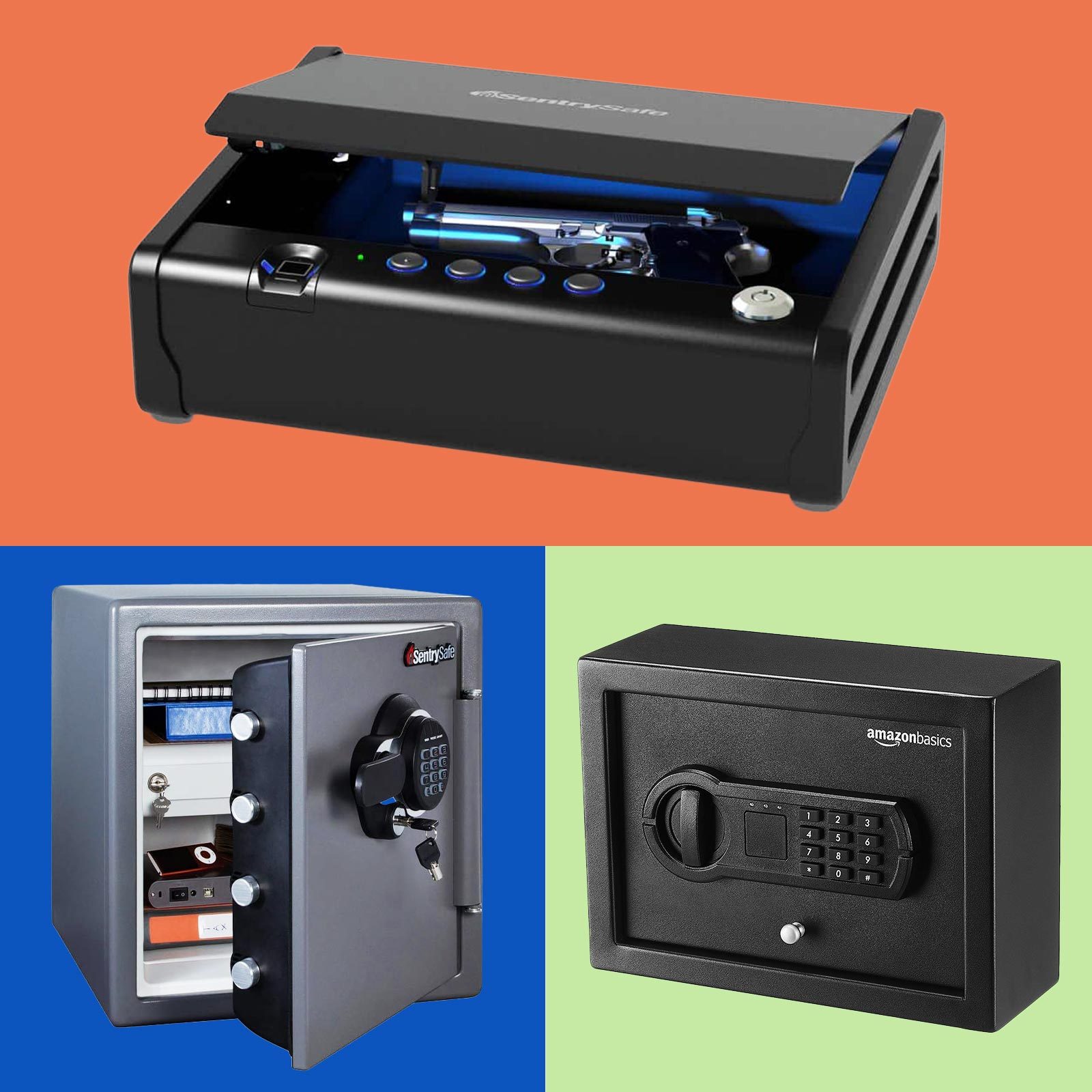

These are the best home safes to protect your personal items from everything from burglars to catastrophes.
Our editors and experts handpick every product we feature. We may earn a commission from your purchases.Learn more.
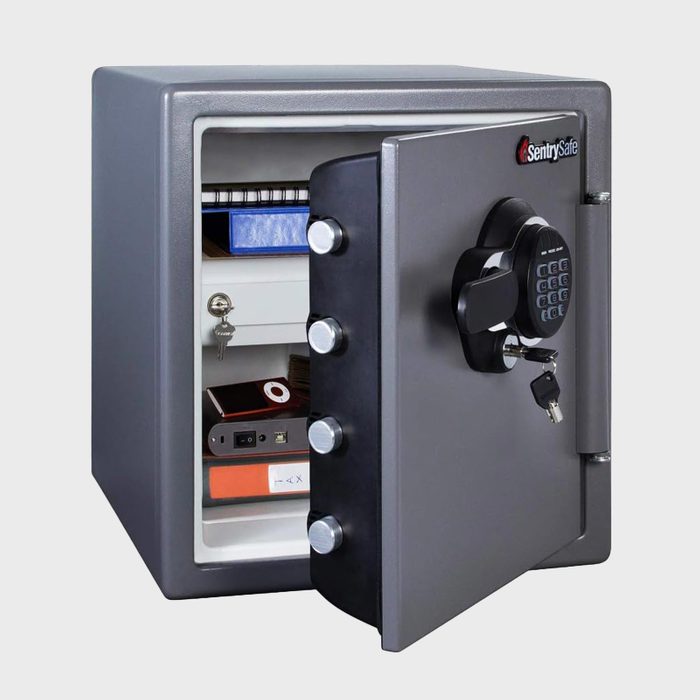
Pros:
Cons:
Topping our list as best overall home safe is the SentrySafe home safe. Constructed with strong alloy steel and featuring an interior light, it has a digital keypad and a key for extra security. This safe is Underwriters Laboratories (UL) Classified to endure one hour at 1700 degrees Fahrenheit. It’s also Electrical Testing Laboratories (ETL) Verified to withstand 24 hours of protection in up to 8 inches of water.
“This safe is fireproof and waterproof, which means your information is safe from burglars and from fires and other damaging events that can occur to your home,” says Kelso.
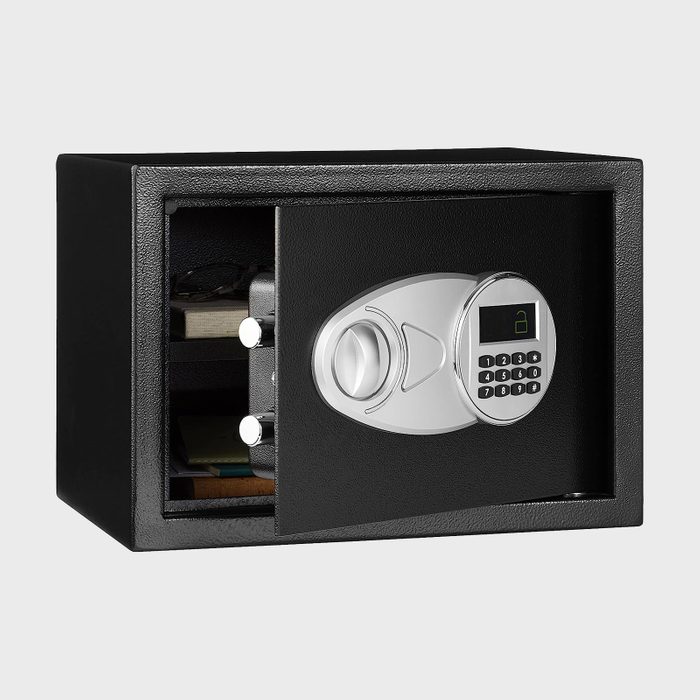
Pros:
Cons:
The Security Safe Box from Amazon Basics won’t break the bank, and you have the convenient option of choosing from the various sizes available. That means you’re likely to find a fit for your specific valuables.
“You can mount this safe on a wall, use it as a floor safe or place it on a shelf,” says Kelso. It is pry resistant, which will keep the bad guys out.” You also have the option to use the keypad to access the safe and the backup of emergency override keys in the event that you forget your password.
With over 29,000 five-star ratings on Amazon, it’s safe to say The Security Safe Box is a real winner. The only downside? Unlike some of the more expensive options, it’s not waterproof or fireproof.
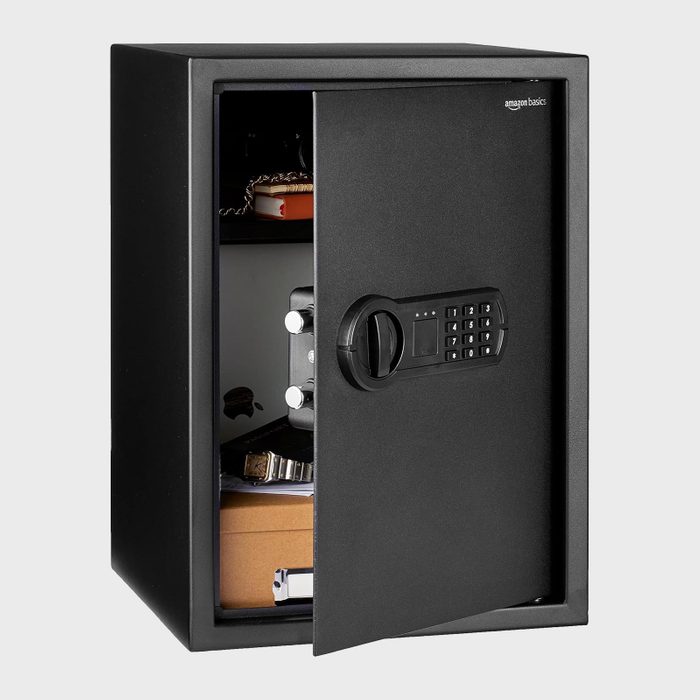
Pros:
Cons:
If you need more space for safe keeping, this 1.8-cubic-foot Home keypad safe from Amazon Basics is what you want, says Kelso. Use it as a floor safe or, with its included mounting hardware, secure it to a wall or shelf for added security.
The heavy-duty steel safe features a keypad, as well as emergency override keys in the event that you forget your password. While it provides ample space for important documents, jewelry and other valuables, it should be noted that this safe isn’t waterproof or fireproof.
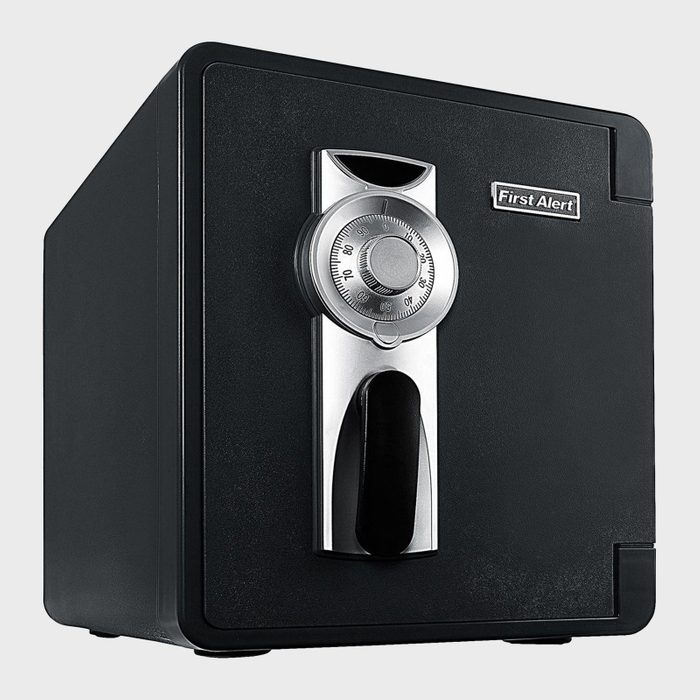
Pros:
Cons:
Want a safe that’ll survive the end of the world (or at least close to it)? This First Alert option is the best home safe for you. It uses a traditional combination lock and comes with keys that allow you to access the safe if you forget your combination.
“It’s only 0.94 cubic feet, but it’s waterproof and fire-resistant,” points out Kelso. “If your safe is submerged, it will keep your documents, electronics and other items dry and—even better—it’s designed to float, which makes it easy to locate if your house is flooded.”
If you live in an area prone to fires, you’ll want to consider your distance to the nearest fire station, advises Rob Gabriele, home security expert and editorial director at SafeHome.org. “If you live in a city with nearby fire stations, you can probably get away with a 15- to 30- minute fire rating. But I usually recommend a fire rating of 30 minutes or more. And if you live in a rural area, look for at least a 90-minute fire rating,” he says.
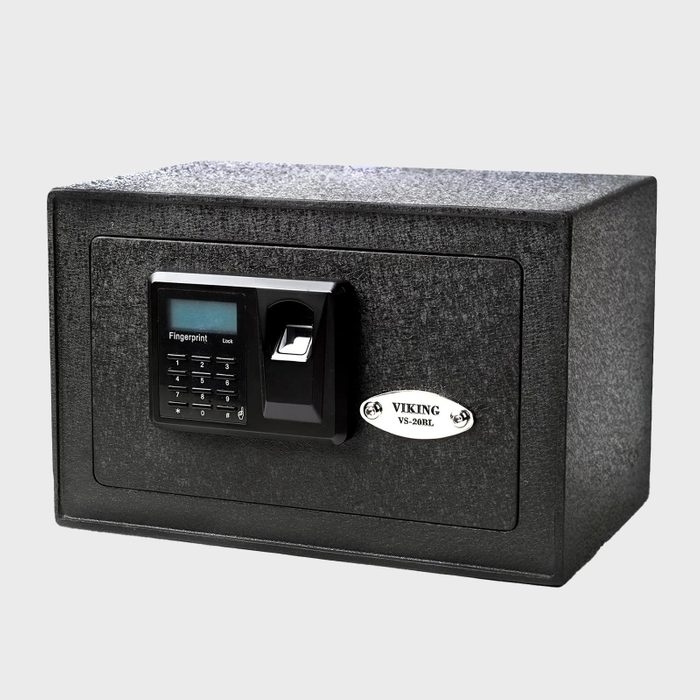
Pros:
Cons:
The small, yet mighty, Viking fingerprint safe might make you feel like James Bond. “The biometric sensor allows you to quickly get access to your information,” says Kelso. You can store up to 32 fingerprints, which means you can allow close friends and family to have access to your documents in case you’re not around. If you forget to close the safe, a warning indicator will alert you that the door has been left open. The only downsides are that it’s not waterproof or fireproof.
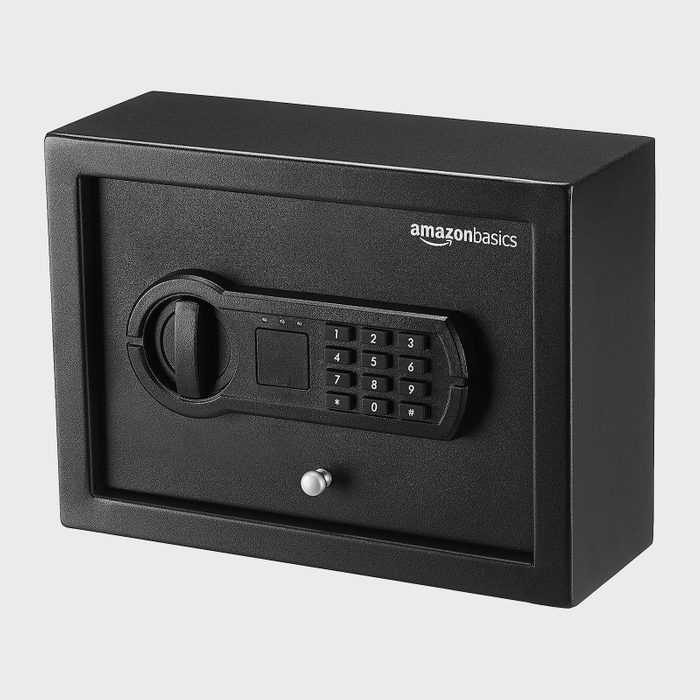
Pros:
Cons:
This small and slender safe from Amazon Basics fits conveniently inside of a desk drawer, making it the ideal office safe. Constructed of alloy steel, it features a programmable keypad as well as a back-up key in the event you forget the combination. Although it’s made for a desk drawer, the safe includes hardware for those who would prefer to mount the safe instead. It’s also a budget-friendly pick for those looking for a more affordable option.
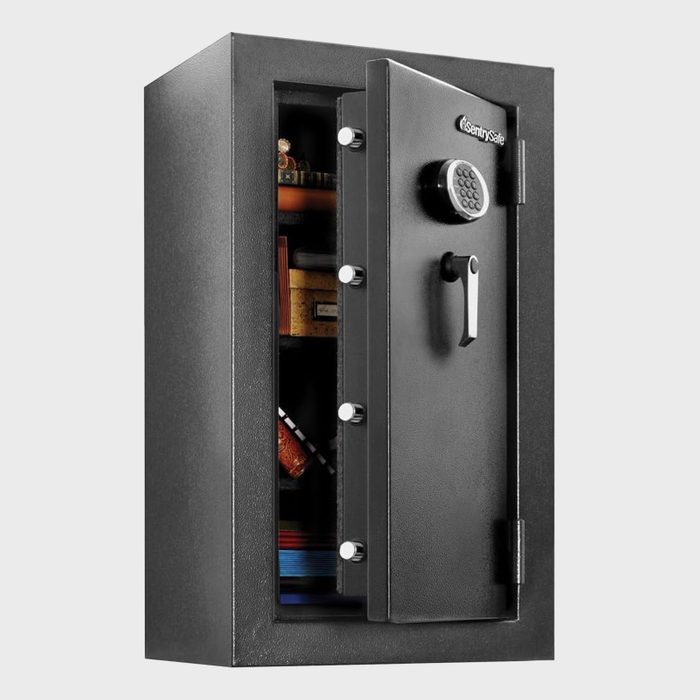
Pros:
Cons:
This fireproof and waterproof SentrySafe is basically the Rolls-Royce of the bunch. It’s certified as a gun safe, features multiple carpeted shelves to prevent scratching and is protected by a digital lock. For added piece of mind in the event of a fire or flood, the safe is ETL Verified to endure half an hour at 1400 degrees Fahrenheit and withstand 72 hours of protection in up to 12 inches of water.
Although it’s the priciest option on our list, if you have the room to store it and possess a lot of valuables, this best home safe is a solid investment.
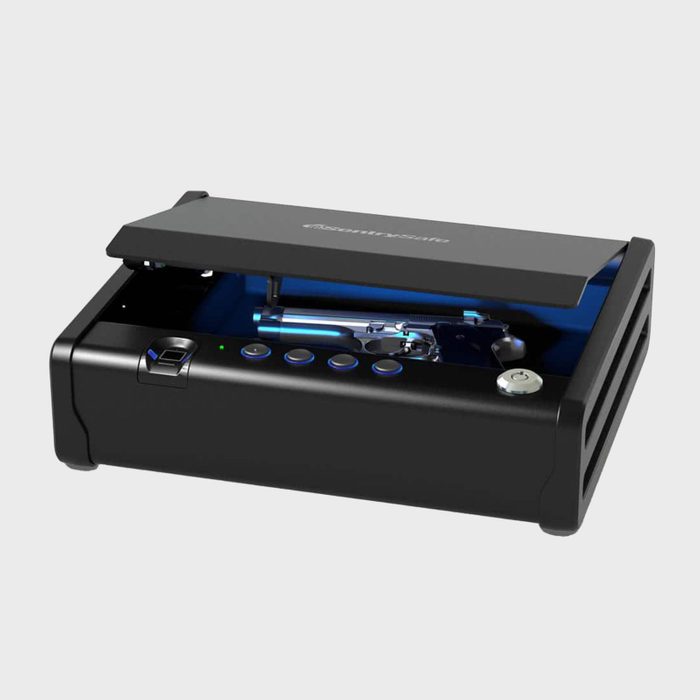
Pros:
Cons:
You should always keep handguns locked up—not only to avoid deadly gun accidents but because they’re one of the most commonly stolen items, according to the Bureau of Justice Statistics. Plus, it’s the law in 18 states and the District of Columbia. This SentrySafe biometric fingerprint safe holds a single handgun and is compact enough to fit in your nightstand drawer. It also features a gas strut that instantly and quietly opens the safe door for single-handed access to your handgun. The brand also offers a two-pistol gun safe.
The main purpose of buying a safe is to keep valuable items secure in the event of a home invasion or disaster, so it’s important to purchase a high-quality one.
“Not all safes are created equal. Consumers need to determine what they want to protect first. For instance, a fire safe that is designed to protect stored paper documents during a fire is different from a security safe that is designed to protect valuables, weapons, etc.,” says MacDowell. “There are testing agencies which ‘certify’ safes for the intended purpose. UL ratings provide consumers with good consumer information. If the safe is small and can be moved, most manufacturers provide bolts that can secure the safe to the floor.”
Whether the purpose of your safe is to keep people out or fire or water from getting in, here’s what you should keep in mind when selecting the best safe for your needs:
At Reader’s Digest, we’re dedicated to researching and identifying the best products on the market for every use and budget. The author of this piece, Leah Groth, has years of experience covering everything from consumer products and cleaning hacks to travel and pets. She’s put together numerous shopping guides and knows how to immerse herself in a topic and then hunt down the best products on the market.
To help find the best home safes, we spoke with technology expert Burton Kelso. He’s worked in the industry for over 30 years, helping others to get the most out of their technology. We also consulted Kirk MacDowell, home security expert at Batten Safe and CEO of MacGuard Security Advisors and Rob Gabriele, home security expert and editorial director at SafeHome.org.
Finding a quality product that’ll protect your valuables is important. We looked for home safes that meet a variety of consumer needs—from small desk drawer boxes to large capacity safes to those that provide peace of mind from catastrophes or those that offer quick and easy access via fingerprint technology. Then, we narrowed down the list using real customer reviews and professional advice from various technology and home security experts.
This depends on your specific needs and the layout of your home. Choose a spot that’s discreet enough that no one will find it in the event of a home invasion, but accessible enough that it’s still convenient for you to get to it when needed. Avoid spots like the primary bedroom closet or under the bed, which are too obvious and would most likely be the first place a burglar looks.
Some safes in this guide are small enough to pick up and carry around or fit inside a desk drawer, while others are meant to stay in one spot. For the larger safes, bolting them to the floor makes them more stable and prevents burglars from picking them up and taking them from your home.
That being said, there are a few instances where bolting a safe to a floor is imperative. For starters, some insurance policies require that your safe be bolted to the floor to qualify for coverage. And second, MacDowell advises that if the safe is to secure weapons, it should also remain bolted to the floor.
If you’re looking for a waterproof safe, ensure it’s listed as waterproof in the product description. Just because a safe is fireproof doesn’t automatically mean it’s also waterproof. However, many safes on the market are both fireproof and waterproof, so if you’re looking for one that’s both, you’ll have a lot of options.
“Just be sure to also store copies of documents like birth certificates and social security cards digitally outside the safe, in case something happens to the safe itself!” adds Gabriele.
Source: